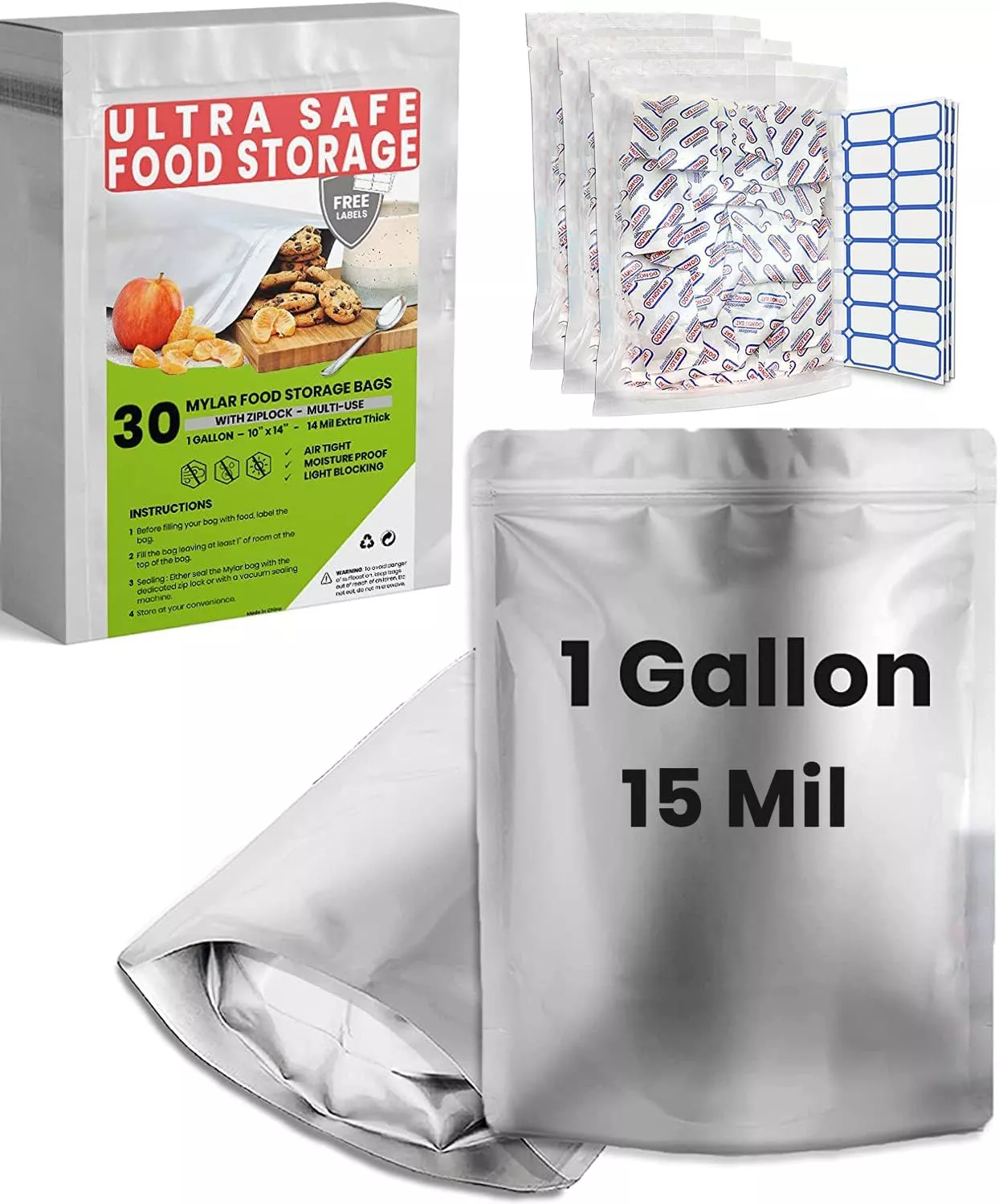
In today’s world, preserving food for the long term is crucial. Mylar bags, particularly those designed for food storage, are an excellent solution. This article delves into the specifics of high-quality Mylar bags, like the Home Sensei 30-pack, exploring their unique features and benefits for effective food preservation.
Product Features
| Feature | Details |
|---|---|
| Size & Quantity | Pack of 30, 1 Gallon Bags |
| Material Thickness | 14.8 Mil (7.4 Mil each side) |
| Oxygen Absorbers | 30 x 400cc included |
| Usage | Suitable for dry food storage such as grains, beans, and more |
| Food Grade | FDA compliant & BPA Free |
| Sealing | Heat sealable with zipper |
| Moisture Protection | 100% moisture proof when sealed |
| Temperature Range | Supports temperatures from 0°F to 183°F |
| Durability | Puncture resistant with light-blocking properties |
Product Overview
| Pros | Cons |
|---|---|
| High durability for long-term storage | Requires proper sealing to be effective |
| Moisture and light protection for food | Initial investment can be pricier than standard bags |
| Multiple usages across various food types | May require heat sealing equipment |
Understanding Mylar Bags and Their Benefits
Mylar bags are more than just a trendy option for food preservation; they are a game-changer for anyone looking to store food long-term. To harness their full potential, you need to know how to utilize them effectively. For starters, I always recommend using high-quality Mylar bags, such as those from Home Sensei, as their durability and moisture resistance make a significant difference.
When sealing food in Mylar bags, I prefer a heat sealer for the best results. This creates an airtight seal that’s crucial for keeping moisture and oxygen at bay. Furthermore, filling the bag tightly reduces air pockets, which is another step toward preserving food longer. For extra protection, employing oxygen absorbers is essential. They actively remove oxygen from the packaging, ensuring that food remains fresher and inhibits the growth of harmful bacteria.
Ideal storage conditions are also vital. I find that placing my sealed Mylar bags in a cool, dark location helps maintain their integrity. Direct sunlight can compromise the bag’s material and the food inside. Moreover, I always label my bags with the contents and date, making it easy to track shelf life.
By following these tips, I’ve successfully extended the shelf life of a variety of foods, from grains to dehydrated fruits. The right techniques, combined with superior Mylar bags, make all the difference.
Optimizing Food Storage with Mylar Bags
When it comes to optimizing food storage, using Mylar bags can make all the difference in preserving your food’s freshness and nutritional value. First, always start by selecting the right size of Mylar bag based on your food storage needs, ensuring it accommodates the quantity you plan to pack. When sealing the bags, I recommend using an impulse sealer or a heat source like a straightening iron to create airtight closures. It’s crucial to remove as much air as possible before sealing, as this directly affects the longevity of your food.
Storing Mylar bags in a dark, cool, and dry place extends their shelf life significantly. Avoid direct sunlight, as ultraviolet rays can deteriorate the material and the food inside. For optimal results, especially with foods like grains and legumes, consider using oxygen absorbers. These small packets absorb excess oxygen in the bag, thereby reducing the risk of spoilage, mold, and pest infestation.
Labeling each bag with the contents and packing date is equally important. This practice not only helps you keep track of what you have stored but also makes it easier to rotate your supplies. Using high-quality Home Sensei Mylar bags ensures that you benefit from moisture and oxygen resistance. Always remember, the key to successful long-term food storage is proper preparation and consistent monitoring of your supplies.
Conclusions
In conclusion, Mylar bags like the Home Sensei 30-pack provide exceptional protection for food storage. With their durability, moisture resistance, and ability to keep food fresh for decades, they stand out as a valuable investment for long-term food preservation. Adopting these bags can ensure that your food supply remains safe and consumable for years to come.